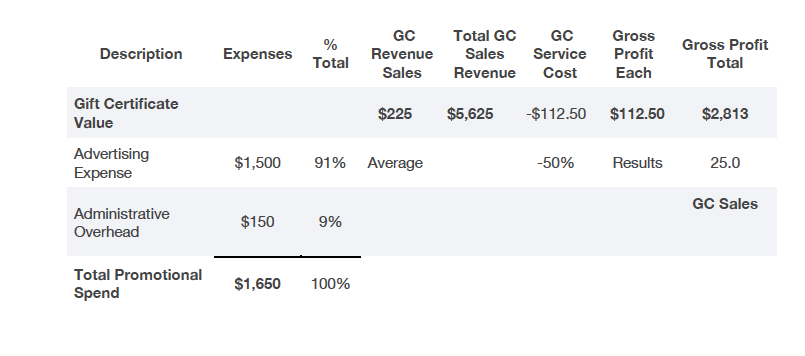How to Organize Promotional Campaigns for Success
Voters across the nation will soon elect leaders to federal, state and local offices. Most often we hear candidates’ efforts and issues referred to as campaigns. The term is one of those unique words in the English language that can be used as a noun and a verb.
A campaign can be a series of military operations to achieve a particular objective, often confined to a specific territory, or involving a specified type of warfare. As both a noun and verb, in business the term campaign is more often described as an organized course of action to achieve a particular goal.
In marketing and sales we use the term campaign to describe the organized activities designed and executed to achieve a sales goal or marketing objective. Like many officers exercising military commands, we understand all too well that we can win several battles and still lose the war.
We like to think of promotional and sales programs as unique campaigns as we design, organize, execute and set priorities for expenditures. First, we start with a campaign title or identifier. This is an easy way for all departments and functions to stay informed on outbound and inbound activities related to the promotional efforts. It helps to use a “catchy” name or theme that reflects the objective or goal.
Next, we establish a time period when the campaign will be executed. As with most efforts, they start strong but often fade in terms of effectiveness. So it’s best to have a beginning and end in mind.
For instance, a campaign may be calendar-specific. A good example is the “pumpkin spice” season at the local coffee shop. It comes around in September and fades by Christmas when hot chocolate promotions make their seasonal debut.
Another reason to keep promotional campaigns organized and measured by definitive time periods is so they can be correlated with budgeting or accounting periods and integrated into internal incentives. These might be sales force commissions or external promotional tools such as coupon redemptions and advertising spends for the defined period.
This strategic planning helps build-in the data metrics needed to calculate and evaluate profitability and return-on-investment (ROI) measures for the promotional campaign, whether it be in terms of dollars or percentages.
It’s important to identify the segment of the market or audience that is to be targeted. It’s not warfare, but you are competing for customers and share-of-wallet. Think about developing the right message and the right channel or media, and presenting it to the right audience (customer or client) at the right time and when they are most likely to be receptive.
For example, I won’t have much success attempting to promote the sale of the Toro Groundsmaster zero-turn riding mower in December and January. However, I could have great success in promoting the Toro Power Max HD Blizzard Buster Snowblower.
It’s important to set goals and objectives that are specific. Developing promotional campaigns is no exception. You must have a specific goal in mind when beginning the campaign.
Do you want to get people in the store? Do you want the phone to ring? Do you want the customer or client to visit your website or engage on social media platforms? Do you want to liquidate inventory or introduce a new product or product line?
The benefit of strategic thinking is that you can determine whether the campaign was effective and whether the resources deployed worked. You also want to determine what didn’t work, so you don’t repeat the expenditure and effort in the future. Saving money is equally as beneficial as making money.
You then need to select the specific media channel to communicate your message in the context of the promotional campaign. Again, the choice of medium must be highly customer-centric. Where is your audience and how can you reach them most effectively and efficiently?
Hopefully at this point in the promotional planning process, you have successfully identified the time period for the campaign, the audience or segment you are trying to reach, the goal your organization is trying to achieve, and therefore can identify the media channels to transmit the message. Now you can begin the process of crafting your promotional message and inserting a call-to-action.
The call-to-action is that element in the message that motivates or incentivizes the customer or prospect to actually do something that contributes to your defined objectives. Oftentimes it’s to call to your toll-free number, download a white paper, sign up for your newsletter, or actually purchase something.
At this point, you can start to collect the financial information most important to your long-term success, at least in terms of your marketing and promotional efforts. The financial analysis is part of the overall evaluation and control of marketing functions.
Many organizations have identified specific metrics that reflect key performance indicators of results, also known as KPIs, in the context of the promotional campaign.
As an example, let’s assume you’re promoting a Health Spa.
First, identify the campaign: “Holidays Offer Gift Certificates.”
Second, specify the period for promotion – for example, Nov. 19 through Dec. 22.
Third, identify a target audience: men age 30 to 60, married with children, incomes from $50,000 to $70,000, homeowners and health-conscious executives.
Fourth, set a goal for the campaign: Increase the gross revenue from sales of gift certificates.
Fifth, determine the media that will be used.
Sixth, create copy with a call-to- action: “Purchase a gift certificate for seasonal giving that is more beneficial than a new technology gadget. Give someone the gift of personal relaxation and relief from the daily grind by presenting them with a day at the spa.”
Seventh, develop an advertising budget. Keep in mind that frequency counts when getting your message across.
Finally, determine the metrics for what you are seeking to accomplish. For example: Increase total revenue by increasing gift certificates sold during the period; increase the average value of gift certificates purchased; increase awareness of spa services; increase percentage of men buying for women, women buying for men or women buying for other women; increase add-on spa sales; increase online purchases; and obtain new customers or reactivate past customers through incentives.
Once executed, you will recognize whether the campaign was worthwhile. But, what you really want to know is whether it is profitable and at what level.
So, let’s look at a simple hypothetical calculation of profits and return-on-investment.
Start with the actual cost of the advertising placements. In this example we’ll use $1,500.
Next add in the administrative overhead costs of developing the campaign and its message: $150, or 10% of the cost.
Now consider the cost of delivering the actual services forecast on average at 40% of the price and use a typical spa rate of $300 per occasion. See chart below:

You can see that your goal to break-even on the forecast spending is 14 gift certificates with a price of at least $300 each, and no more than $120 in associated costs to provide the promised services. In January you look at the results and find that you sold 25 gift certificates at an average of $225 per gift certificate with an average cost of services provided still at 50% of price. The results might look like the chart below:

Total gross profit was $2,813 and total expenses associated with the promotional campaign costs were $1,650 for a net profit of $1,163.
To calculate profit percentage, divide $1,163 by the sales of $5,625, which yields about 20.6% as the profit percentage metric.
Further, taking the net profit at $1,163 and dividing it by the cost or investment in the campaign at $2,813 (labor) and $1,650 (promotion), or $4,463 rounded, the return-on-investment or ROI is about 26%.
Both metrics, profit and ROI, clearly indicate that this promotional campaign was well worth the effort to organize, plan and execute.
Copyright 2024 The Business Journal, Youngstown, Ohio.



